1. Hanging Gardens

Overview of Hanging Gardens
Hanging Garden is a terrace garden located on top of Malabar Hill, adjacent to Kamla Nehru Park. It was constructed in 1880 by Mr. Ulhas Ghapokar and has a breathtaking view of the Arabian Sea. Known as Pherozeshah Mehta Gardens, the magnificent grounds are devoted to Barrister Pherozeshah Mehta. In reality, the letter PMG is rather visible in the gardens when viewed from above. The garden features rich green foliage, perfectly sculpted hedges in the shape of animals, and a peaceful bird’s eye view of the Arabian Sea.
Built on a water reservoir, the garden gives the locals access to clean drinking water. One of the main attractions of the Hanging Garden is the exquisite floral clock that is located there. In addition, the garden is a suitable location for yoga and early morning runs. For some mental tranquility, the garden offers a peaceful escape from the daily activity of the city.
2. Mumbai Zoo

Overview of Mumbai Zoo
Jijamata Udyan, which was formerly known as Ranichi Bagh, or Queen’s Gardens, is Mumbai’s sole zoo. Its previous name was an homage to the original Victorian Gardens in Britain. These days, it goes by the name Veermata Jijabai Bhosale Udyan and Zoo, after Shivaji’s mother, the Maratha Empire’s hero. Byculla’s zoo is situated right in the middle of the city. Constructed in 1861, this is not just Mumbai’s sole zoo but also among the oldest in India. The zoo has a variety of wild creatures in individual cages, including lions, monkeys, crocodiles, elephants, and many more.
The aviary is home to a variety of colorful and chattering birds. The zoo is undergoing a renovation that will bring in many more animal species and add many exciting new attractions to the existing facility. A therapeutic garden, a butterfly habitat, and a visually impaired tactical garden are also part of the redevelopment plans. Eight gregarious and amiable penguins will amuse you with their adorable antics in the penguin enclosure, which is currently available to the public at the zoo.
3. National Museum of Indian Cinema
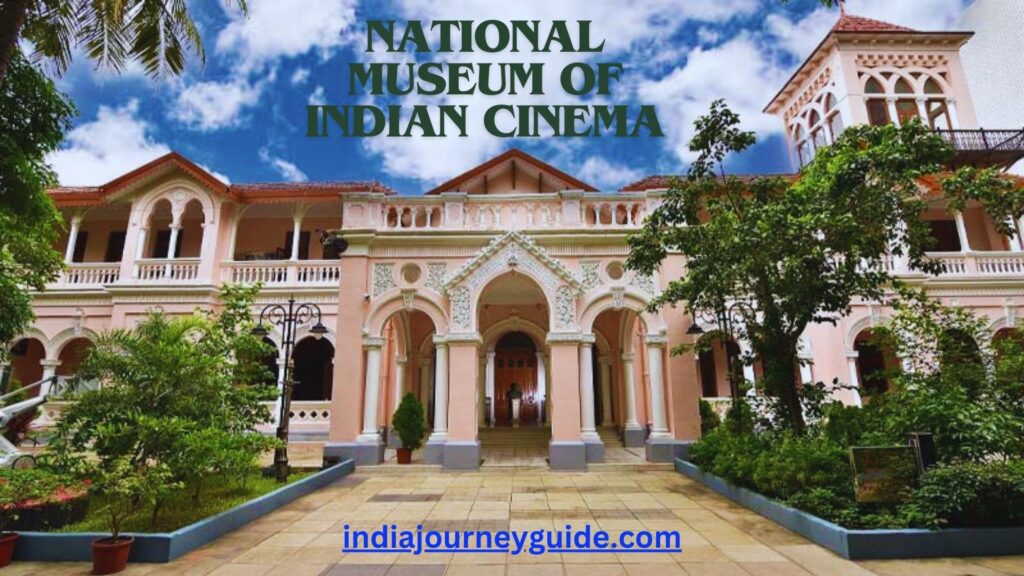
Overview of National Museum of Indian Cinema
The first museum in the nation to showcase Indian cinema history is the National Museum of Indian Cinema. It is housed in two structures on Mumbai’s Peddar Road: the historic Gulshan Mahal and the New Museum Building. The museum uses audiovisuals, souvenirs, cameras, gear, and much more to present the history of Indian cinema.
The National Museum of Indian Cinema features historical and informative displays regarding regional cinema in addition to its focus on Hindi cinema. Visitors can stroll through a variety of cinematic events, including the first Lumiere Brothers films and Dadasaheb Phalke’s debut feature film, Raja Harishchandra. Handmade posters depict famous movies, the studio and silent film era, the impact of the World Wars on Indian cinema, and more.The camera, the most essential piece of equipment for filmmakers, has its own section. This part is a treat for people who understand the practicalities of making a film, from the hand operated camera used by Dadasaheb Phalke to the cameras used by great filmmakers like Satyajit Ray to the present 3D and 4D cinemas.
Film enthusiasts will find much to enjoy in the museum, including the recordings of KL Saigal, the statue of Raj Kapoor that makes a great selfie spot, and the wall that features pictures of Dadasaheb Phalke Award winners. Additionally, there is a section of the museum entirely devoted to Mahatma Gandhi in the other wing. Films produced at the Mahatma, a kids’ film studio where youngsters may try their hand at lighting, editing, and filming, are included in this wing.
4. Essel World
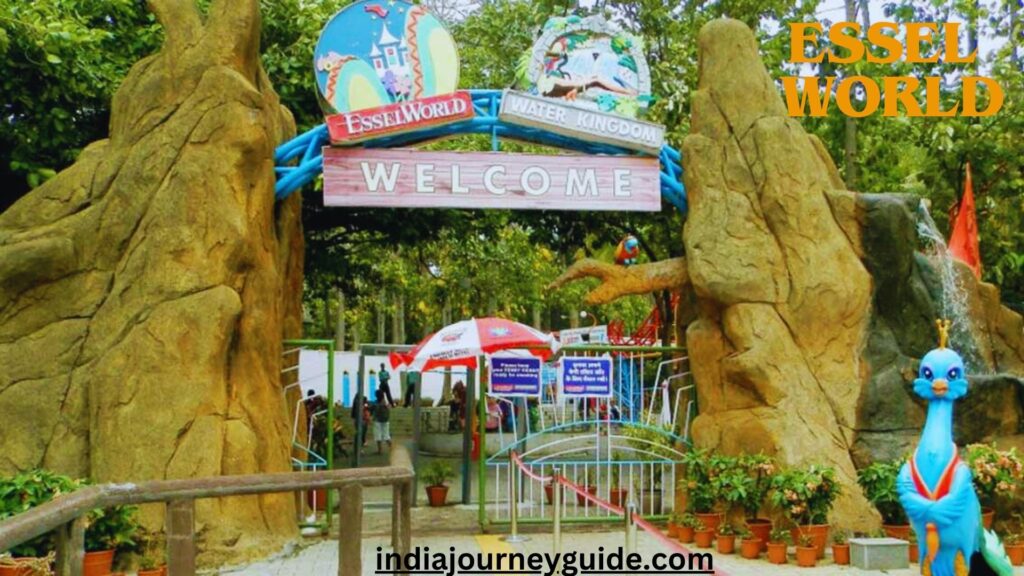
Overview of Essel World
Situated near Mumbai, the capital city of Maharashtra, in Gorai, is Essel World, one of the most well-known and visited amusement parks in the nation. Combined, EsselWorld and Water Kingdom form one of the biggest theme parks in Asia. They cover 64 acres and are used by people of all ages, locals and visitors alike, with children being the main draw. Many families consider Essel World and Water Kingdom to be their favorite summertime destinations because of their thrilling rides and entertainment options. To experience both of the amusement parks, arrange a picnic for the entire day or spend the night at one of the adjacent hotels. A trip to Essel World is a must for visitors to the state capital. Going to Essel World evokes reminiscence and youthful enthusiasm in a lot of grownups.
The popularity of amusement parks might be attributed to their beautifully manicured interiors. Additionally, the theme parks have appeared in numerous Bollywood films and TV shows. Additionally, Essel World has won the Indian Association of Amusement Parks & Industries’ National Award of Excellence, Most Innovative Promotional Activity, and Award for the Best Variety and Number of Rides.
Rides for Amusement:
Depending on the age and height restrictions, one can ride. There are rides to pick from for kids, adults, teens, and the whole family. A few of these are the daring varieties that will quickly raise your heart rate. There are eleven thrilling rides, fifteen kid-friendly rides, and fourteen family-friendly rides at EsselWorld.
Scary Ride:
The scariest ride in India is this one. The rollercoaster known as “Monster in the Mist” is ideal for people who enjoy the rush of being startled by realistic imagery from horror films. Even though the trip only lasts for five minutes, it’s a fantastic experience. It will lead you down an exciting yet gloomy, murky, and dark alley. The amazing animatronics and first-rate audio only heighten the mood that is produced in the dark lane. You can scream all you want, but don’t let this ride pass you by.
Rides on Water:
The opposite of Essel World, Water Kingdom, features solely water rides. Water features include slides, wave pools, swimming pools, lagoons, aqua play pools, and fountains. There are several themes for water rides, such as the Serpent Safari and the Elephant Safari. The largest wave pool in India features crystal-clear blue water, cutting-edge wave technology, and beautifully manicured gardens all around. The lagoon, which is more than 30,000 square feet in size, is the ideal place to unwind in the water.
5. Gateway of India
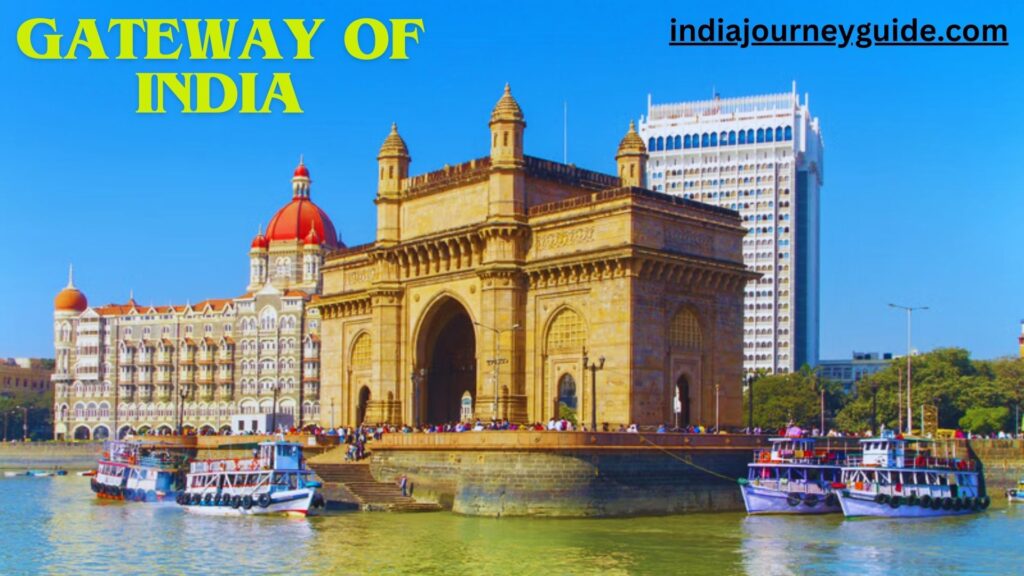
Overview of Gateway of India
The Gateway of India is undoubtedly one of Mumbai’s most renowned tourist attractions. It looks out over the Arabian Sea, perched majestically atop the Apollo Bunder. Constructed in 1924, this monument stands as a distinctive feature of Mumbai city. The renowned architect George Wittet started the building to honor King George V and Queen Mary’s visit to Bombay.The monument’s enormous structure, a stunning fusion of Arabic, Indian, and Western architecture, has drawn many tourists to the city. Additionally, it serves as the departure point for several boat services that travel to the famed Elephanta Caves.
Called ‘Mumbai’s Taj Mahal,’ this iconic structure was completed 13 years later in 1924 after its foundation was laid in 1911. The building is composed of solid concrete and yellow basalt, and it is adorned with a variety of Hindu and Muslim designs. Before India gained her independence, the basalt arch known as the Gateway provided entry and exit points to the country via waterways. It was also the point of departure for the final British ship that departed India for England. In the vicinity of the Gateway, there are other statues of Chhatrapati Shivaji and Swami Vivekananda. The Gateway complex’s seaside vista is particularly lovely and dreamy at night. Thus, the Gateway of India is not just a piece of historical significance but also a magnificent piece of architecture!
6. Juhu Beach
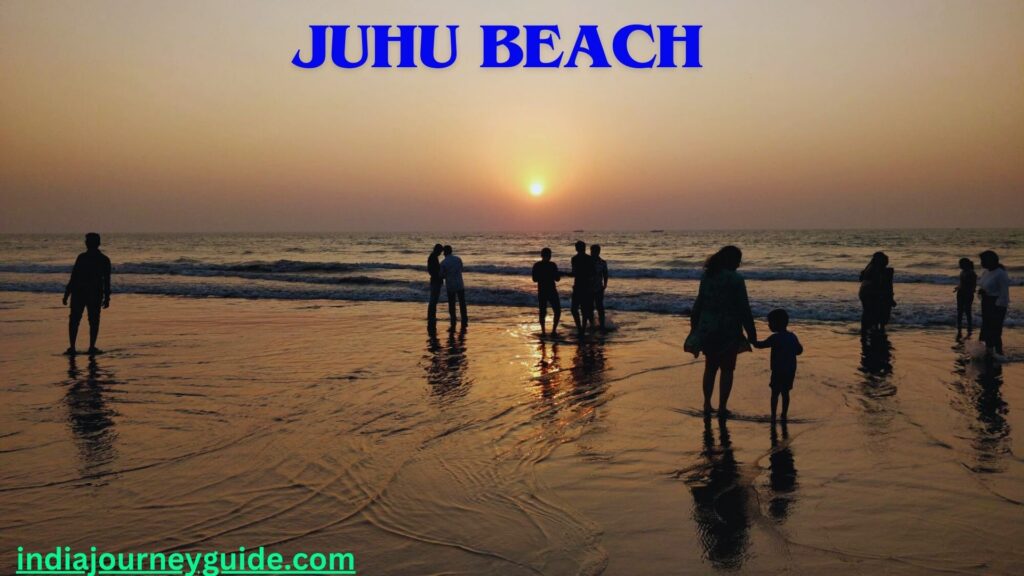
Overview of Juhu Beach
Mumbai’s longest beach, Juhu Beach, is also the most well-liked by visitors. It is also known for its extensive selection of sweet and sour street cuisine with a typical Mumbai flavour. One of the most affluent neighborhoods in Mumbai is Juhu, which is home to several well-known Bollywood and TV stars, the most well-known of whom owns a villa there. It is not unusual to see a celebrity jogging on the beach.
A lot of toy merchants, vendors selling roasted corn, and acrobats draw attention during television shooting. You can see a play at the well-known Prithvi Cafe or visit the famed ISKCON Temple, which is located just meters from the beach, while you’re here. An endless sensation of serenity can be experienced just by taking a stroll across the beach sand. Despite complaints about the beach’s cleanliness, BMC’s efforts have greatly improved the area’s appearance in recent years.
7. Elephanta Caves

Overview of Elephanta Caves
Elephanta Caves is a UNESCO World Heritage Site that showcases medieval Indian rock-cut art and architecture. The caverns are situated 11 kilometers away from Mumbai on the island known as Elephanta or Gharapuri. The Elephanta Caves, formerly called Gharapurichi Leni, are now just the ruins of what were once ornately painted pieces of art. It offers a breathtaking perspective of the Mumbai skyline as well. From Gateway of India, you can take a ferry to the Elephanta Caves. The majority of these cave temples, which date from the fifth to the seventh century, are devoted to Lord Shiva.
The Elephanta Caves location is home to two sets of alcoves: a larger group consisting of five Hindu caves and a smaller group consisting of two Buddhist caves. The Shaiva Hindu faith is represented by the stone carvings found in Hindu caves. The caves are a work of art in and of themselves, containing several significant images such as ‘Trimurti,’ or the three-headed Shiva, ‘Gangadhar,’ or the Ganga as she descends to the earth, and ‘Ardhnareshwar,’ or Shiva and Parvati together in one body. The Elephanta Caves are not just a significant historical landmark but also an unusual place to trek.
8. Film City mumbai
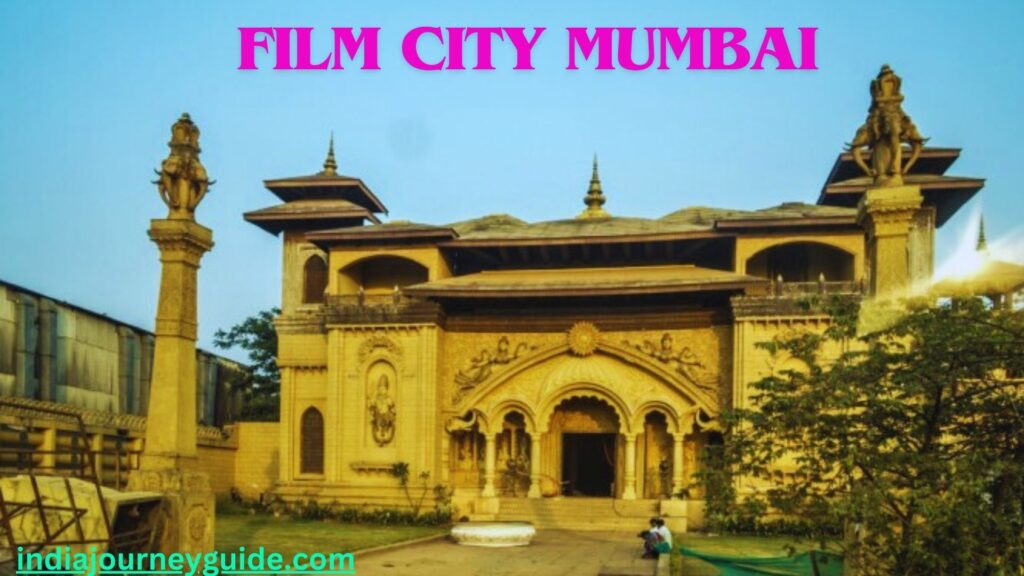
Overview of Film City mumbai
One of Mumbai’s most well-liked tourist destinations is without a doubt the Gateway of India. It looks out over the Arabian Sea, perched majestically atop the Apollo Bunder. Constructed in 1924, this monument stands as a distinctive feature of Mumbai city. The renowned architect George Wittet started the building to honor King George V and Queen Mary’s visit to Bombay. The monument’s enormous structure, a stunning fusion of Arabic, Indian, and Western architecture, has drawn many tourists to the city. Additionally, it serves as the departure point for several boat services that travel to the famed Elephanta Caves.
Called ‘Mumbai’s Taj Mahal,’ this iconic structure was completed 13 years later in 1924 after its foundation was laid in 1911. The building is composed of solid concrete and yellow basalt, and it is adorned with a variety of Hindu and Muslim designs. Before India gained her independence, the basalt arch known as the Gateway provided entry and exit points to the country via waterways. It was also the point of departure for the final British ship that departed India for England. In the vicinity of the Gateway, there are other statues of Chhatrapati Shivaji and Swami Vivekananda. The Gateway complex’s seaside vista is particularly lovely and dreamy at night. Thus, the Gateway of India is not just a piece of historical significance but also a magnificent piece of architecture!
9. Taraporewala aquarium
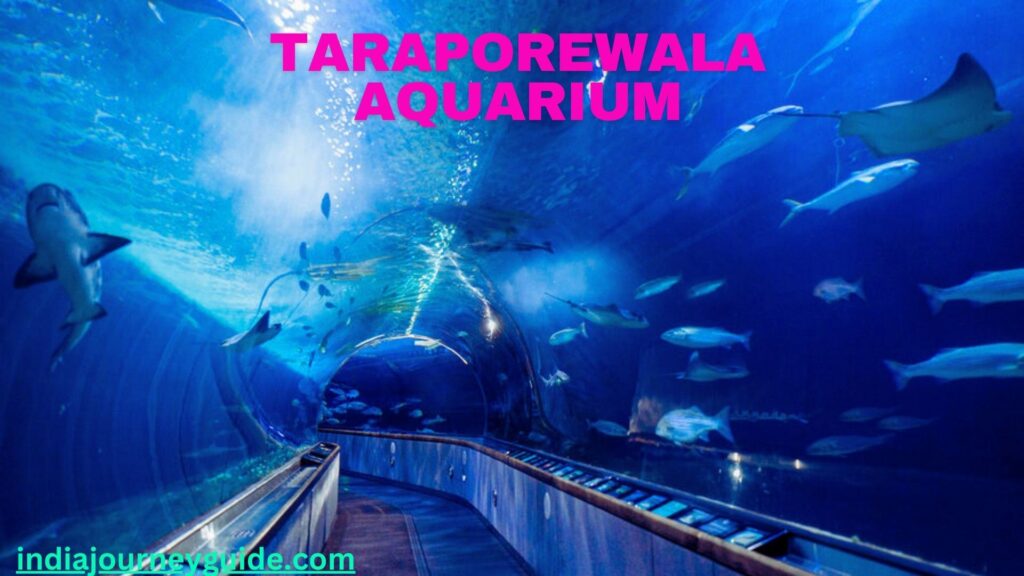
Overview of Taraporewala aquarium
In Mumbai, Taraporewala Aquarium is located on Marine Drive. It boasts a good assortment of aquatic life, including freshwater and marine species. The management of this lovely landmark intends to transform it into an underwater location where visitors can take in the splendor of the marine life. The first President of India, Dr. Rajendra Prasad, officially launched this aquarium in 1951. It is currently governed by the Maharashtra government.
This aquarium is home to uncommon fish species, unique marine life, and some beautiful pearls. It is among the greatest aquariums to view marine life and fish.
The aquarium features three spacious chambers with carefully arranged fish that accentuate their visual appeal. Sharks, octopuses, and kite fish may be seen in the larger tanks, while corals, worms, sea lilies, and sea horses can be seen in the smaller tanks. This area also features displays of pearls, shells, and items made from shells.
10. Kamala Nehru Park

Overview of Kamala Nehru Park
In the center of the city is a well-known recreational area called Kamala Nehru Park. It is a popular location for walking and running as well as for relaxing and getting away from the daily grind. Additionally, The Park is not far from a few universities, schools, and dorms. Thus, after a long day, one would find groups of students working out or simply relaxing. That being stated, individuals of all ages will find it to be a terrific environment. Individuals receive their offspring; the elderly pay them a visit; and parents take a break from their domestic and professional lives.
Kamala Nehru Park is situated next to a busy thoroughfare near Deccan Gymkhana. Visitors who are looking for a peaceful, traffic-free area may want to pass on this attraction. However, there are areas of the park where there is noticeably less noise. In any case, there’s a calm atmosphere about the attraction that can make you feel refreshed. The park has a children’s playground on one side, large trees, and shrubberies along the walkways. It is kept up beautifully. Additionally, there are a ton of sitting options available, enough to accommodate a sizable number of park visitors.
More About Kamla Nehru Park
One can go for walks or jogs in the morning or evening in Kamala Nehru Park. The location boasts a lengthy, immaculate running track that circles the very large lawns. When one is fatigued, they can find a spot on the rows of cement seats or sit on the wooden or wrought iron benches. The well-manicured, verdant grass create a tranquil atmosphere. The park is mostly lined with big, dense trees that have benches underneath them. Guests are welcome to read a book, meditate, or simply sit and take in the fresh air. This public spot is a common spot for friends to get together and converse. The remaining areas of Kamala Nehru Park are used by fitness enthusiasts for various forms of exercise.
Workshops on physical fitness and enjoyment are occasionally held at Kamala Nehru Park. When chosen by the participants, its location attracts a sizable crowd to the park. Of the more than 300 trees in the park, more than 150 are fairly old. There’s no better place to see these trees than Kamala Nehru Park, in the concrete jungle that the city is becoming. Additionally, the park features vivid flower beds that give the site a lively feel. Kids can play on the slides, swings, see-saws, and jungle gym in the kids’ playground with their parents. A fountain and an authentic, albeit non-operational Indian Air Force aircraft (MARUT HF24) may also be found in the park.
